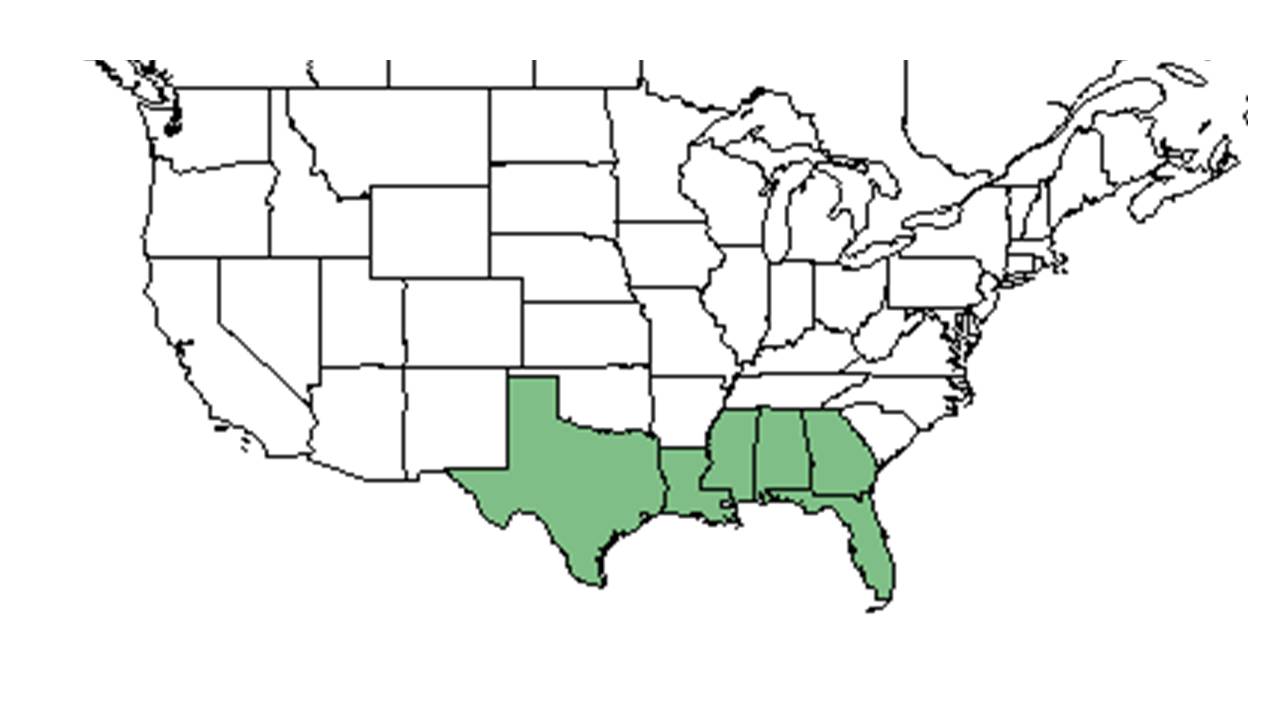Difference between revisions of "Euphorbia discoidalis"
(Created page with "{{italic title}} <!-- Get the taxonomy information from the NRCS Plants database --> {{taxobox | name = Euphorbia discoidalis | image = Insert.jpg | image_caption = | regnum...") |
|||
| Line 22: | Line 22: | ||
==Ecology== | ==Ecology== | ||
===Habitat=== <!--Natural communities, human disturbed habitats, topography, hydrology, soils, light, fire regime requirements for removal of competition, etc.--> | ===Habitat=== <!--Natural communities, human disturbed habitats, topography, hydrology, soils, light, fire regime requirements for removal of competition, etc.--> | ||
| + | – It likes sandy soils as well as disturbance. Kral (1983) says that it appears to have increased because of disturbance: "Areas in various stages of site preparation have an abundance which continues until the crowns of plantation pine close."<ref name="Kral 1983"/> It is found in open sandy woodlands; it is most common in longleaf pine-deciduous scrub oak woods and oak-hickory-pine uplands wherever the soils are sandy. It is also found in sandy clearings, and sandhills.<ref name="Kral 1983"/> | ||
===Phenology=== <!--Timing off flowering, fruiting, seed dispersal, and environmental triggers. Cite PanFlora website if appropriate: http://www.gilnelson.com/PanFlora/ --> | ===Phenology=== <!--Timing off flowering, fruiting, seed dispersal, and environmental triggers. Cite PanFlora website if appropriate: http://www.gilnelson.com/PanFlora/ --> | ||
| + | It flowers from late August to frost.<ref name="Kral 1983"/> | ||
===Seed dispersal=== | ===Seed dispersal=== | ||
===Seed bank and germination=== | ===Seed bank and germination=== | ||
===Fire ecology=== <!--Fire tolerance, fire dependence, adaptive fire responses--> | ===Fire ecology=== <!--Fire tolerance, fire dependence, adaptive fire responses--> | ||
| + | – It responds positively to fire. Kral (1983) writes "In naturally stocked uplands it increases as a result of woods fires which reduce competing woody vegetation." <ref name="Kral 1983">Kral, R. (1983). Euphorbia discoidalis Chapman. A report on some rare, threatened or endangered forest-related vascular plants of the South. R. Kral. Atlanta, USDA Forest Service, Paper 228: 701-705.</ref> | ||
===Pollination=== | ===Pollination=== | ||
===Use by animals=== <!--Herbivory, granivory, insect hosting, etc.--> | ===Use by animals=== <!--Herbivory, granivory, insect hosting, etc.--> | ||
| Line 31: | Line 34: | ||
==Conservation and Management== | ==Conservation and Management== | ||
==Cultivation and restoration== | ==Cultivation and restoration== | ||
| + | ==Photo Gallery== | ||
==References and notes== | ==References and notes== | ||
| − | |||
Revision as of 12:50, 11 June 2015
| Euphorbia discoidalis | |
|---|---|

| |
| Scientific classification | |
| Kingdom: | Plantae |
| Division: | Magnoliophyta - Flowering plants |
| Class: | Magnoliopsida – Dicotyledons |
| Order: | Euphorbiales |
| Family: | Euphorbiaceae |
| Genus: | Euphorbia |
| Species: | E. discoidalis |
| Binomial name | |
| Euphorbia discoidalis Chapm. | |

| |
| Natural range of Euphorbia discoidalis from USDA NRCS Plants Database. | |
Contents
Description
Distribution
Ecology
Habitat
– It likes sandy soils as well as disturbance. Kral (1983) says that it appears to have increased because of disturbance: "Areas in various stages of site preparation have an abundance which continues until the crowns of plantation pine close."[1] It is found in open sandy woodlands; it is most common in longleaf pine-deciduous scrub oak woods and oak-hickory-pine uplands wherever the soils are sandy. It is also found in sandy clearings, and sandhills.[1]
Phenology
It flowers from late August to frost.[1]
Seed dispersal
Seed bank and germination
Fire ecology
– It responds positively to fire. Kral (1983) writes "In naturally stocked uplands it increases as a result of woods fires which reduce competing woody vegetation." [1]